Just an Adorable Cat Breed, or a Dangerous Predator? – 11 Pictures + 1 Video
Serval was first found in Africa and it hasn’t been spreading much. They are widely spread in southern Africa and they are quite rare in northern Africa and the Sahel. Their population is quite big and they are marked as least concern by the International Union for the Conservation of Nature and Natural Resources.
They can be found in different habitats up to 12.500 ft above seas level. These habitats mostly include savannas and rain forests, since servals are looking for places with high grass and a lot of cover, while they prefer being close to the water.
1 / 12

Servals, like most cats, are omnivores. They have been seen eating grass and other small vegetation, but they also devote a lot of time to hunting their prey. They mostly feed on small animals such as rodents, small birds, frogs and reptiles.
2 / 12

They are very skilled and dangerous predators. Servals are known for the fact that they have the longest legs in comparison with their body amongst all cats. Those legs help servals to jump incredibly high, as much as 6 ft and also they can leap over 12 ft when they are hunting or escaping a predator. Servals also have amazing hearing allowing them to hear a threat or a prey from a long distance. Even though servals are great predators, there are still some wild animals that they find threatening. Wild dogs and hyenas are servals greatest fears, but still they can easily escape with their leaps or climb a nearby tree.
3 / 12

Serval, is active during the day as well as during the night. They particularly enjoy rainy or cloudy cool days, during which they are usually way more mobile and active since they feel quite energized. They are definitely not great fans of hot sunny days. When a day like that comes, they will most likely spend a lot of it simply grooming and laying around in shades of trees or bushes, relaxing and trying to cool down themselves, before they start hunting at twilight when the sunlight starts to settle down.
4 / 12
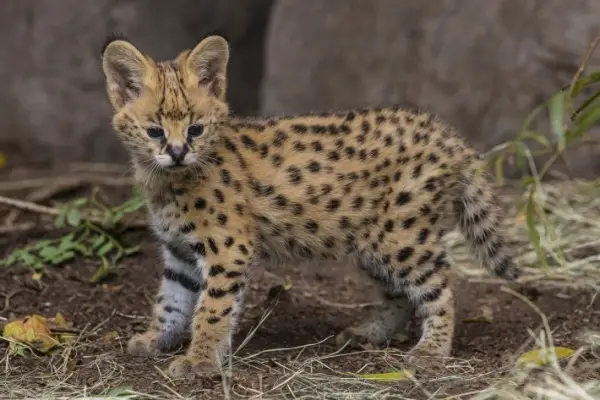
They are most active right around twilight, than around midnight and once again in the morning. They are not perceived as nocturnal animals since they can spend a lot of time awake during the day. That doesn’t stop them from hunting at night when the visibility for other animals is poor, while servals eyes are very adjustable to the dark. When they feel rested and start to look around for prey, servals can walk up to 3 miles every evening.
5 / 12
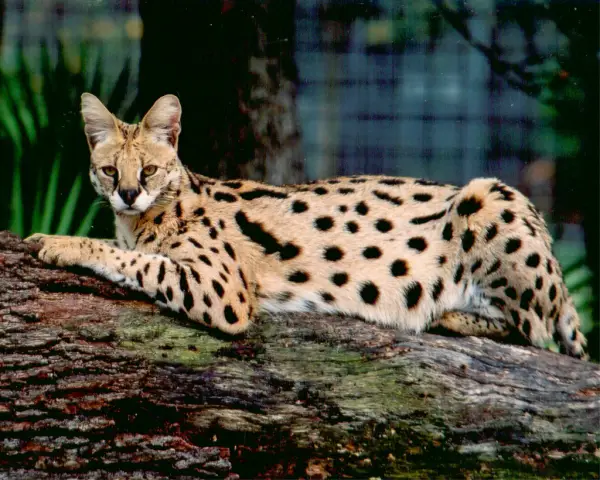
Servals are solitary animals. The only time a serval is in close contact with another one of its species is during mating, and before they leave their mother. When servals mate it is not uncommon for a male to stay with a female for some time after cubs are born, but eventually he will leave. And when the cubs are born they will stay with their mother for around a one year before they can feel mature enough to leave their mother and start their own solitary life. When this happens mothers are supportive of their offspring, and are not trying to stop them from leaving once they can feed on their own and protect themselves.
6 / 12
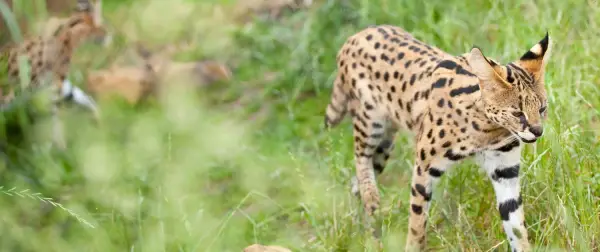
Like most solitary animals, servals mark their territory. Their home ranges can be from 4 to 12 square miles wide. Home ranges of males and females usually overlap at some point, allowing them to get in contact when the mating season starts. Even though they can have quite wide ranges, servals usually tend to stay in certain regions, depending on the prey, water, cover places, or even human interference.
7 / 12

They are also very sedentary, meaning they will probably spend their entire life in their home range, or move a few miles at best. Servals don’t like company as mentioned before, but they will not display aggressive behavior towards each other even when they do encounter another serval. This is not an uncommon scenario, since their home ranges do overlap, but when the encounter happens, they will simply avoid one another and go their separate ways, instead of fighting or defending their territory, which is a very common behavior for cats.
8 / 12
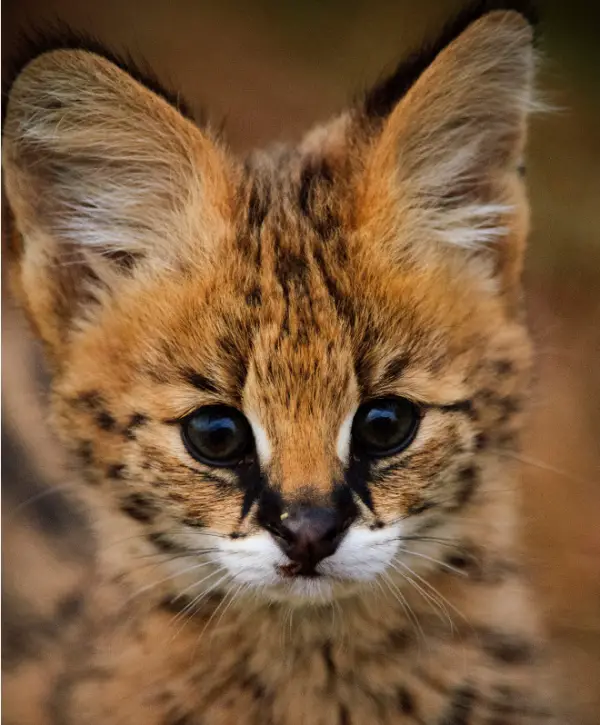
Young servals leave their mother when they are around one year old, once that happens they become sexually mature in the upcoming period, and should be fully sexually mature before they turn two years old. Oestrus in females happens only once or twice a year, in case a mother loses its cubs it can happen more times, such as three of four a year. Oestrus lasts around four days but it can be brief as one day. In that time, female servals start to behave quite differently than they normally do. During that time they give males that are nearby very clear signals that they are ready to mate.
9 / 12
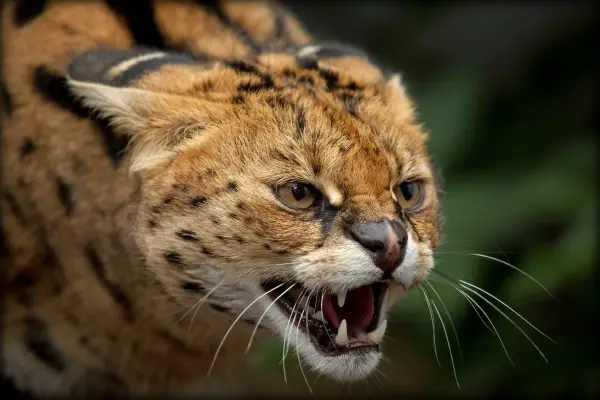
Short “meow” sounds can be very loud, since a male in the overlapping home range needs to hear them. Females will also start to urinate more marking their territory and leave saliva trails in the grass in order for a male to trace them easily. They will also keep their tails in the air and once a male shows up, female will rub her face against his face to let him know she wants to mate.
10 / 12

Once they mate a gestation period will last around three months and usually no more than 4 kittens will be born. The mother feeds them until they start hunting small prey themselves at around 6 months of age, and as we mentioned before, they will leave her at around 12 months when they start sexually maturing.
11 / 12
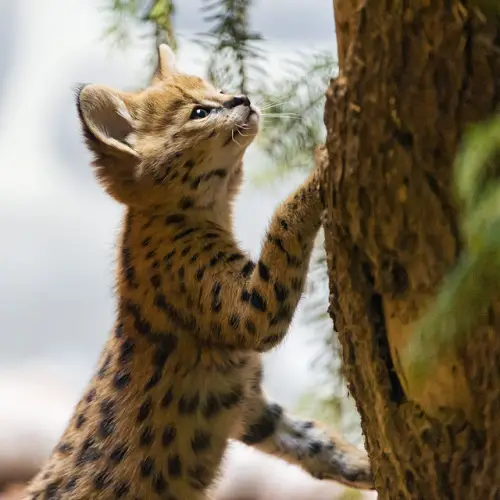
If you are interested in seeing how they look like in motion, here is a youtube video of cute serval cats playing around.
12 / 12
Image sources:
- upload.wikimedia.org/wikipedia/commons/thumb/c/c9/Serval_at_Auckland_Zoo_-_Flickr_-_111_Emergency.jpg/1024px-Serval_at_Auckland_Zoo_-_Flickr_-_111_Emergency.jpg
- cincinnatizoo.org/wp-content/uploads/2013/02/serval.jpg
- gregorysweeney.photography/wp-content/uploads/2015/01/serval-1.jpg
- honesttopaws.com/wp-content/uploads/sites/5/2016/03/08-serval-710×473.jpg
- gabbywild.files.wordpress.com/2011/04/nairobilog.jpg?w=1024&h=819
- kidszoo.org/wp-content/uploads/2015/02/serval_4-1500×630.jpg
- zoo.org.au/sites/default/files/styles/zv_carousel_large/public/Serval-web-620.jpg?itok=eQxZciFL
- awf.org/sites/default/files/media/gallery/wildlife/Serval/serval_Federico_Veronesi.jpg?itok=hZVDxRsT
- elelur.com/data_images/mammals/serval/serval-07.jpg
- zooborns.com/.a/6a010535647bf3970b0120a895c75a970b-800wi
- 66.media.tumblr.com/565926f8b5d17c8c1ca81bd8fbbf845d/tumblr_nbt1qbzTUK1sxw6mio1_500.jpg
- youtube.com/watch?v=3IrEm8fwvQI
